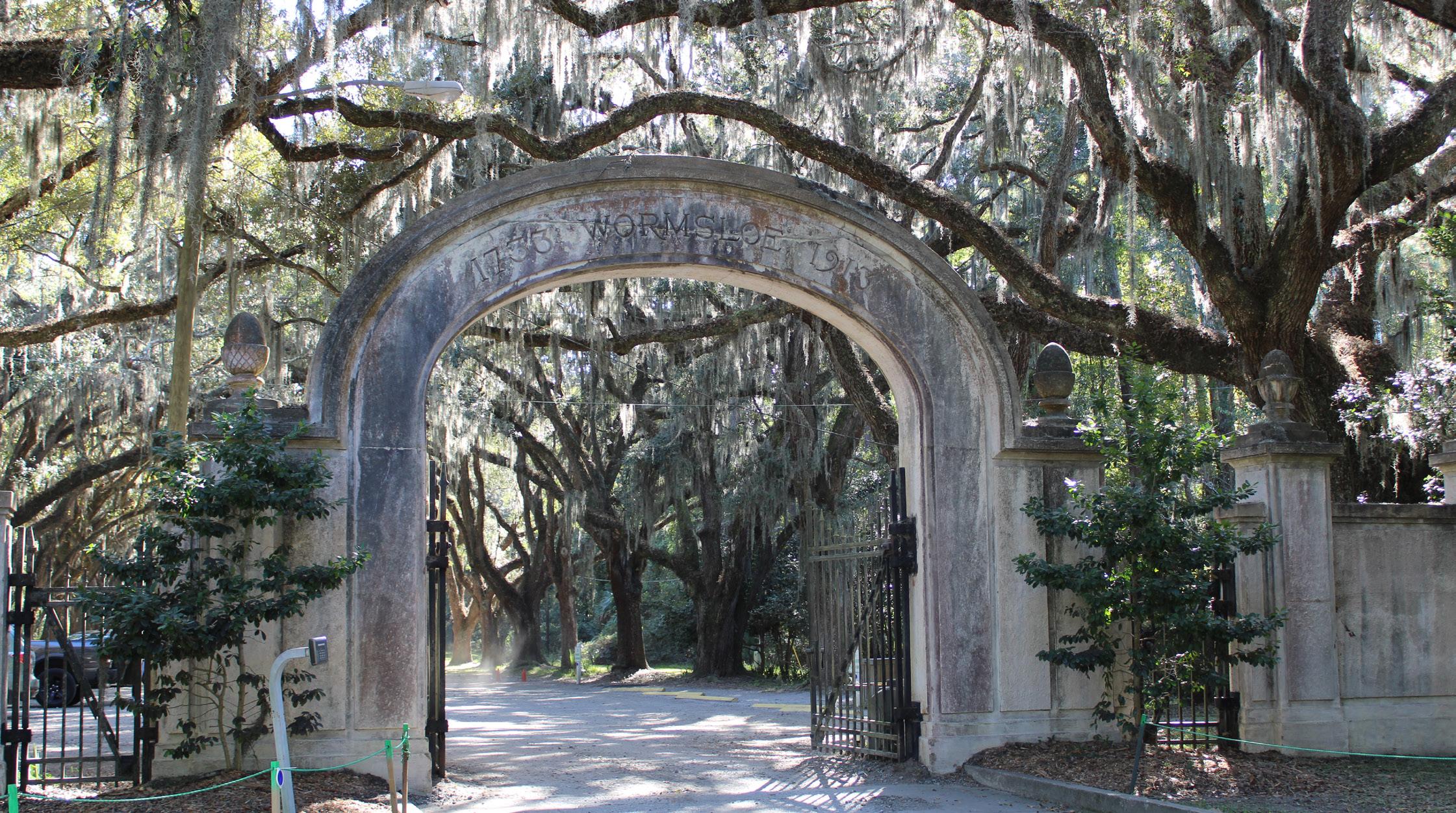
UNIVERSITY OF GEORGIA PRESS
books for spring / summer 2025


books for spring / summer 2025



23 THE ARCHIVABILITY OF TELEVISION
Bratslavsky, Lauren, and Elizabeth Peterson, eds.
31 BEAUTIFUL SOLIDARITY, SYMBOLIC IMPACTS
O’Brien, Eileen
4 CHET ATKINS
Cusic, Don
37 DISPERSED DISPOSSESSION
Vorbrugg, Alexander
35 FOOD AUTONOMY IN CHICAGO
McFarland, Pancho
19 GEORGIA’S HISTORICAL RECIPES
Frey, Valerie J.
14 GRANT’S ENFORCER
Gugliotta, Guy
28 GREAT TIMES DOWN SOUTH
Santangeli Valenzani, Giuliano
3 HAPPIER FAR
Mehta, Diane
10 HEROES AND OTHER MORTALS
Gaillard, Frye
1 HIKING METRO ATLANTA’S HIDDEN FORESTS
McDonald, Jonah, and Zana Pouncey
12 A HISTORY OF SAUTEE NACOOCHEE
Jones, Tommy Hart
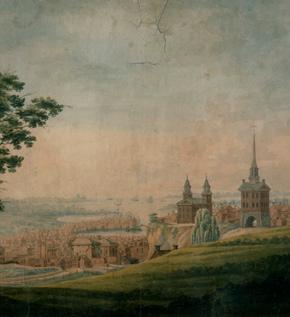


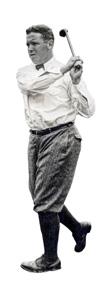
8 HOPE NEVER TO SEE IT
Fialka, Andrew, and Anderson Carmen
18 HOUSE-KEEPING IN THE SUNNY SOUTH
Tennent, Ella Ruth
34 THE INJUSTICE OF PROPERTY
Przybylinski, Stephen
26 LIVING INDIGENOUS FEMINISM
Johnston, Carolyn Ross, and Terri McKinney Baker
36 MIGRANT JUSTICE IN THE AGE OF REMOVAL
Chamberlain, Jacob P.
15 MISSISSIPPI’S BLACK COTTON
Cotton, MacArthur, and John Obee
32 THE MOSQUITO CONFEDERATION
Mendiola, Daniel
7 THE MURMUR OF EVERYTHING MOVING
Stanton, Maureen
25 A PIONEER IN THE CAUSE OF FREEDOM
Rothman, Joshua D., ed.
33 A PIRATE’S LIFE NO MORE
Hahn, Steven C.
2 PLAY THIS BOOK LOUD Bonomo, Joe
11 PROTESTING WITH ROSA PARKS Bollard, John K.
22 PUBLIC ARCHAEOLOGY FOR THE TWENTY-FIRST CENTURY
Brooks, James F., and Jeremy M. Moss, eds.
6 SALMON WEATHER
Fuhrman, CMarie
27 SECRET HISTORIES
Diffley, Kathleen, Caroline Gebhard, and Cheryl B. Torsney, eds.
38 SPACES OF ANTICOLONIALISM
Legg, Stephen
30 SUCCESS AT A PRICE
Huebner, Lisa C., Samantha Jeune, and Odette Kolenky
16 THERE’S LOTS TO SEE IN GEORGIA Dickey, Jennifer W., ed.
29 UPSET AT OAKMONT
Schlossman, Steven, and Kari Thomas
24 THE WEIRD SOUTH
Taylor, Melanie Benson
SINCE ITS FOUNDING IN 1938, the primary mission of the University of Georgia Press has been to support and enhance the University’s place as a major research institution by publishing outstanding works of scholarship and literature by scholars and writers throughout the world.
The University of Georgia Press is the oldest and largest book publisher in the state. We currently publish 70 new books a year and have a long history of publishing significant scholarship, creative and literary works, and books about the state and the region for general readers.
11 Bollard, John K. | PROTESTING WITH ROSA PARKS
2 Bonomo, Joe | PLAY THIS BOOK LOUD
23 Bratslavsky, Lauren, and Elizabeth Peterson, eds. | THE ARCHIVABILITY OF TELEVISION
22 Brooks, James F., and Jeremy M. Moss, eds. | PUBLIC ARCHAEOLOGY FOR THE TWENTY-FIRST CENTURY
36 Chamberlain, Jacob P. | MIGRANT JUSTICE IN THE AGE OF REMOVAL
15 Cotton, MacArthur, and John Obee | MISSISSIPPI’S BLACK COTTON
4 Cusic, Don | CHET ATKINS
16 Dickey, Jennifer W., ed. | THERE’S LOTS TO SEE IN GEORGIA
27 Diffley, Kathleen, Caroline Gebhard, and Cheryl B. Torsney, eds. | SECRET HISTORIES
8 Fialka, Andrew, and Anderson Carmen | HOPE NEVER TO SEE IT
19 Frey, Valerie J. | GEORGIA’S HISTORICAL RECIPES
6 Fuhrman, CMarie | SALMON WEATHER
10 Gaillard, Frye | HEROES AND OTHER MORTALS
14 Gugliotta, Guy | GRANT’S ENFORCER
33 Hahn, Steven C. | A PIRATE’S LIFE NO MORE
30 Huebner, Lisa C., Samantha Jeune, and Odette Kolenky | SUCCESS AT A PRICE
26 Johnston, Carolyn Ross, and Terri McKinney Baker | LIVING INDIGENOUS FEMINISM
12 Jones, Tommy Hart | A HISTORY OF SAUTEE NACOOCHEE
38 Legg, Stephen | SPACES OF ANTICOLONIALISM
1 McDonald, Jonah, and Zana Pouncey | HIKING METRO ATLANTA’S HIDDEN FORESTS
35 McFarland, Pancho | FOOD AUTONOMY IN CHICAGO
32 Mendiola, Daniel | THE MOSQUITO CONFEDERATION
3 Mehta, Diane | HAPPIER FAR
31 O’Brien, Eileen | BEAUTIFUL SOLIDARITY, SYMBOLIC IMPACTS
34 Przybylinski, Stephen | THE INJUSTICE OF PROPERTY
25 Rothman, Joshua D., ED. | A PIONEER IN THE CAUSE OF FREEDOM
28 Santangeli Valenzani, Giuliano | GREAT TIMES DOWN SOUTH
29 Schlossman, Steven, and Kari Thomas | UPSET AT OAKMONT
7 Stanton, Maureen | THE MURMUR OF EVERYTHING MOVING
24 Taylor, Melanie Benson | THE WEIRD SOUTH
18 Tennent, Ella Ruth | HOUSE-KEEPING IN THE SUNNY SOUTH
37 Vorbrugg, Alexander | DISPERSED DISPOSSESSION
Take a tranquil break with a nature hike just outside the city
An Hour or Less from Downtown
jonah mcdonald and zana pouncey
MILESTONE PRESS
“Some say Atlanta is only about asphalt. This guidebook will change their minds.”
—South Fork Conservancy
As hikers explore the woodland coves, creek-side trails, wooded hilltops, and rocky mountains contained in this guidebook, it’s easy to forget that every trail in this book is in a suburban neighborhood. While each of the more than sixty hikes described by Jonah McDonald and Zana Pouncey is within an hour drive of downtown, these hidden suburban forests transport hikers so much farther away.
Each route includes maps, complete hiking directions, trailhead location, and even public transit access information. There’s no need to drive to the mountains to get out on the trail. Hiking Metro Atlanta’s Hidden Forests lets you visit wildlife areas, nature preserves, and historic sites without venturing far beyond the perimeter.
JONAH MCDONALD arrived in Atlanta on foot more than two decades ago. After completing his 2,172-mile southbound throughhike on the Appalachian Trail, he put down roots in Atlanta. Today he serves as the DeKalb County Park Naturalist at Mason Mill Park. He published the first edition of Hiking Atlanta’s Hidden Forests: Intown and Out in 2014. His second book is titled Secret Atlanta: A Guide to the Weird, Wonderful, and Obscure. McDonald is also a storyteller, television host, and tour guide. He loves exploring his city via bicycle or canoe or on foot and believes that there is a new story to learn and tell around every bend. When he’s not already on an adventure, he loves finding a new one.
ZANA POUNCEY is a native southerner and has lived in Atlanta for more than ten years. She loves city life with all her heart but is a passionate environmentalist at her core. Connecting people to nature is her calling. After graduating from Emory University with a degree in environmental science, Pouncey spent several years working in environmental advocacy and education for nonprofit organizations including Trees Atlanta, Zoo Atlanta, and the Atlanta Botanical Garden. She’s been awarded a Grosvenor Teacher Fellowship by the National Geographic Society, is on the board of the Atlanta Green Theater Alliance, has presented at environmental conferences and teacher workshops, and has written for National Geographic’s Education blog.




JOE BONOMO has written about music for many years. His books include Field Recordings from the Inside; Sweat: The Story of The Fleshtones, America’s Garage Band; AC/DC’s Highway to Hell (33⅓ Series); and Conversations with Greil Marcus. He lives in Dekalb, Illinois. Visit him online at No Such Thing as Was.
An exploration of the many reasons music touches our minds and hearts
Noisy Essays
joe bonomo
“The purpose of Play This Book Loud is to electrify readers, set them on fire, and send them running out into the night in search of their own life-altering experiences. Bonomo lets us in on the secret, rounds out the picture, supplies the details, presents us with the whole world of rock and pop. There’s so much more to that world than the golden oldies everybody knows. Historians and fans alike will be glad to have this book.” —David Kirby, author of Help Me, Information
More than at any time in human history, our daily lives are scored and imprinted by music. We listen while bicycling, while taking walks, on the train to and from work, and at home on stereos or streaming. We’re immersed in music and music making virtually 24/7. Why is music such an essential part of the way we live, and how does it enrich and fasten itself to our very beings?
Play This Book Loud tunes in to many voices, from mainstream bands to obscure artists, from Lydia Loveless singing her heart out to DJ Shadow/Cut Chemist endlessly crate digging, from the Detroit Cobras playing for a few dozen to Green Day filling stadiums, from Riot Grrrl punk to the traditional styles of Connie Francis, from the Stooges’ messiness and psychedelic rock to the careful orchestration of anonymous session players and 1960s commercial jingles.
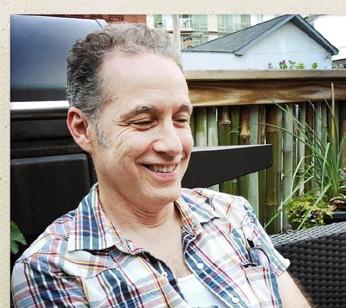
MAY
5.5 x 8.5 | 256 pp.
paperback $26.95t 9780820373805
In this compelling and exuberant book, song by song, Joe Bonomo moves between zones of listening, tuned in while wearing headphones or watching a band in a club. With the heart of a fan and a generous ear, he enthusiastically explores the reasons music, and those who devote themselves to it, matters so deeply. Play This Book Loud explores our urge for sonic existence.
diane mehta
CRUX: THE GEORGIA SERIES IN LITERARY NONFICTION
“If you are a writer, ‘you have to claw and fight over every verb and part of speech or life loses its electricity.’ Diane Mehta’s phrase is perfectly apt for her memoir, which digs in deep and does so many things at once: following a path of self-encounter that begins with her Indian origins and ends up in a castle in Italy keeping anxious company with a baby bat. Rhythmic, syncopated, the prose has an astute lyric edge. Engaging hard memories as well as the absurdities of the lived day, Mehta scoops up details with a Nabokovian eye. These essays come at us from every angle and amount to a wholly original selfportrait.”—Sven Birkerts, author of The Miró Worm and the Mysteries of Writing
In Happier Far, Diane Mehta takes us on a funny and engrossing tour of the absurdities and dilemmas of becoming a writer and how family can sometimes help us and sometimes get in the way. From a vibrant childhood in India to her youth in an unwelcoming New Jersey suburb, from the confusions of marriage and divorce to life as a single parent, she chronicles her search for a family history that can help explain who she is and what matters most to her now.
In concert halls, art galleries, parks, cemeteries, and hospitals, Mehta follows her curiosity to imaginatively expand her immediate world. With a voice that’s propulsive and ironic, sly and profound, she takes stock: She wrestles with a personal tragedy in a letter to a turtle and reveals the hallucinatory mania of migraines in her interactions with a dog-walking service. She meditates on memory with ghosts of the dead, teaches herself to swim despite chronic pain, connects with her mother by listening to Beethoven’s late sonatas, and examines family documents in an effort to pin down the story of her Indian-Jain and Jewish-American parents. Mehta tries to meet the demands of love, marriage, divorce, and parenting, all while figuring out what it takes to express herself clearly. An original and feisty storyteller, Mehta shows us that if you are kicked out of the life you thought you were going to lead, you can still rebuild it and become, as Milton said in Paradise Lost, “happier far.”

DIANE MEHTA is the author of two poetry collections, Tiny Extravaganzas and Forest with Castanets. Her poetry, criticism, and essays have appeared in the New Yorker, Virginia Quarterly Review, Kenyon Review, Times Literary Supplement, American Poetry Review, and A Public Space. She is a Yaddo and Civitella Ranieri fellow and is a poet in residence at the New Chamber Ballet in New York City.


A compelling biography of an American music icon and his enduring legacy
Chet Atkins
Mr. Guitar don cusic
“Chet Atkins: Mr. Guitar is likely to serve as the definitive biography for many years to come. In addition to country and American popular music enthusiasts and scholars, this work is likely to be of interest to historians and sociologists who focus on the American South and to those readers with an interest in the recording/television/entertainment industry. Anyone interested in Nashville as Music City, U.S.A. will find this work to be of interest as well.”—Timothy Dodge, author of The School of Arizona Dranes: Gospel Music Pioneer
Chet Atkins was arguably the most influential American guitarist of the twentieth century and, through his work as a recording executive, is often credited as a founder of the Nashville Sound. In Chet Atkins: Mr. Guitar, noted music historian Don Cusic illuminates the legend, detailing Atkins’s work as a guitarist, producer, music executive, and guitar designer, while also exploring his roles as mentor, friend, and husband.
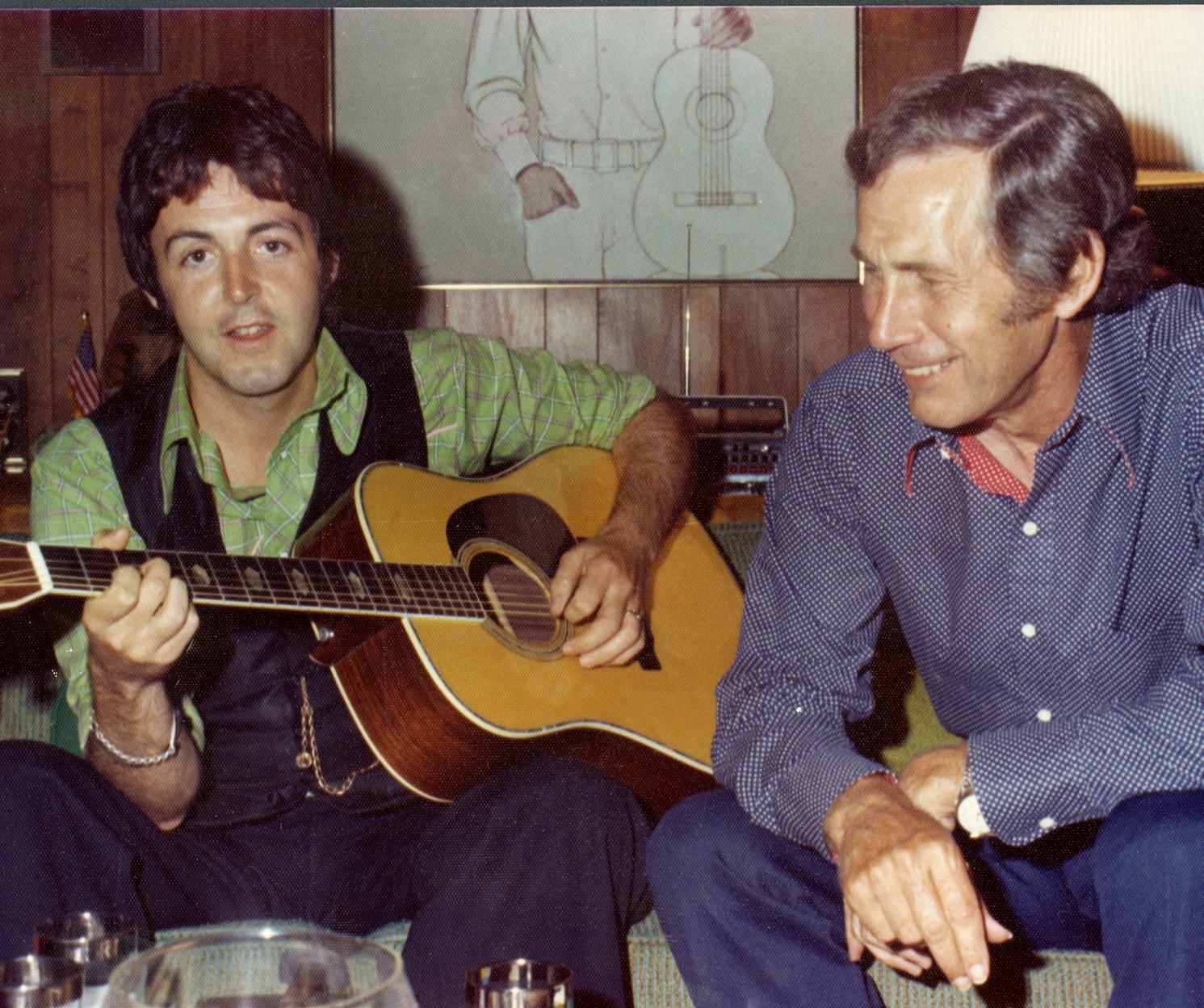
Born in 1924 in Luttrell, Tennessee, Chester (Chet) Burton Atkins taught himself to play several instruments. A lifelong musician, he started his career playing alongside many other legendary entertainers, such as Red Foley, the Carter Family, Hank Snow, and Eddy Arnold. In the 1950s, as an RCA Victor manager, producer, and musician, Atkins was one of the early architects of the Nashville Sound, which led to the first crossover country-pop hits. He was also there at the beginning of rock and roll and played on the early recordings of Elvis Presley and the Everly
Brothers. When the Beatles came to the United States in February 1964, the lead guitarist, George Harrison, was seen on TV playing a Gretsch guitar designed by Chet Atkins.
By the end of his life in 2001, Atkins had recorded over one hundred solo albums, won fourteen Grammys, including a Grammy for “Lifetime Achievement,” and nine Country Music Association “Instrumentalist” awards, and was a member of the Country Music Hall of Fame. His innovative playing style has inspired musicians from Mark Knopfler, George Harrison, and Paul McCartney to Earl Klugh, Tommy Emmanuel, Doc Watson, Lenny Breau, Jerry Reed, and many others.




CUSIC is a historian of country music, the Curb Professor of Music Industry History, and a professor of music business at Belmont University. His many books include Saved by Song: A History of Gospel and Christian Music and The Cowboy in Country Music: An Historical Survey with Artist Profiles. He served as a consultant on the Ken Burns documentary on country music and has appeared on numerous documentaries and TV shows. In 2022, Cusic was inducted into the Western Music Association Hall of Fame. He lives in Brentwood, Tennessee.
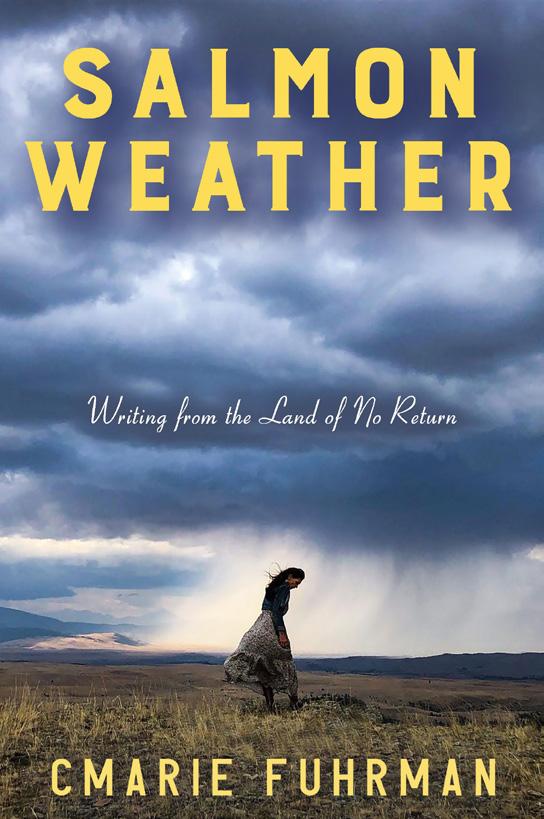
CMARIE FUHRMAN is the author of Camped Beneath the Dam: Poems and coeditor of Cascadia Field Guide: Art, Ecology, Poetry, and Native Voices: Indigenous American Poetry, Craft, and Conversations. Her work has appeared in Orion, Terrain.org, and other publications. She is associate director and director of poetry at Western Colorado University, where she teaches nature writing. She is the director of the Elk Rivers Writers Workshop. A former Idaho Writer in Residence, she lives in the Salmon River Mountains of Idaho with dogs, a fish biologist, and wildness. CMarieFuhrman.com

MARCH
5.5 x 8.5 | 156 pp. PAPERBACK $18.95t 9798991456524
EBOOK AVAILABLE
PUBLISHED BY
DISTRIBUTED BY
our
Writing from the Land of No Return
cmarie fuhrman
“Intense and reflective, heart-wrenching and heart-expanding, this essay collection holds contradictory and complex emotions together with tenderness and care. Salmon Weather offers hard-won truths and yet wonder. It is fierce and yet humane. It is honest and yet full of compassion. An ode to all things wild, these essays are written with precision and masterful prose. Readers are welcomed into this wild world—and will leave a changed person.” —Laura Pritchett, winner of the PEN America award for fiction, author of Three Keys
In the heart of Idaho’s Salmon River Mountains, a woman unknowingly begins what becomes a journey of understanding. Haunted by personal loss and the complex history of the American West, she seeks beauty and understanding at alpine lakes, beside wild rivers, in cross-country skiing, on trails, and with her dogs. Here, amid granite peaks and endangered beings, she confronts the challenges and awe of nature, the ethics of hunting, the past, an uncertain future, and the depths of her own being. As she navigates physical and emotional landscapes, she grapples with questions of identity, belonging, and the delicate balance between humanity and the wild.
This is more than a personal narrative; it is a powerful call for environmental awareness, the feminine, understanding of history, and a celebration of beauty. With unflinching honesty, CMarie Fuhrman examines the complexities of history, the sacredness of the land, and the urgent need to protect our wild spaces. These essays resonate with a deep reverence for Indigenous people, history, and the natural world. They will speak to anyone who has found refuge in nature, wrestled with the past, or dared to envision a brighter tomorrow.
A Memoir maureen stanton
“Beguiling, vivid, and rich with loving devotion, The Murmur of Everything Moving is a beautiful, heartbreaking memoir. The writing is precise and excellent; there are certain lines so good you want to write them down so you don’t forget. There is sorrow, portrayed without fear, and there is love exercised like a powerful muscle. It’s a wonder to behold, and so is this book.”
—Stephen P. Kiernan,
author of The Glass Chateau
When Maureen and Steve met in their twenties, he’d left behind a difficult marriage and she had ended a troubled relationship. In each other, they found a passionate love and shared a dream of a living off the land in rural Michigan. Three years later, when Steve, at twenty-nine, was diagnosed with cancer, they embarked on an all-out effort to save his life. When Steve’s childhood friend, Joey, a drug addict, learned that Steve needed money for experimental cancer treatments that insurance wouldn’t cover, he offered to sell Steve’s pain medication, a synthetic opioid with a high street value, to help pay the costs; only one of the friends would survive.
The Murmur of Everything Moving chronicles a young, workingclass couple’s odyssey through the medical mileu, as they navigate the terrain of illness and caregiving, of compassion and loss. This beautiful and aching memoir is ultimately a story of love—romantic, brotherly, and spiritual—in all its challenging but exquisite complexities.

MAUREEN STANTON is the author of Body Leaping Backward: Memoir of a Delinquent Girlhood, winner of the Maine Literary Award for memoir. Her essays have received the Iowa Review Prize, the Sewanee Review Prize, Pushcart Prizes, the American Literary Review Award, and the Thomas J. Hruska Award from Passages North. She has been awarded fellowships from the National Endowment for the Arts and the Virginia Center for Creative Arts. She teaches creative writing at the University of Massachusetts Lowell.

MARCH 5.5 X 8.5 | 256 PP. PAPERBACK $22.95t 9798991456500


A Graphic History of Guerrilla Violence during the American Civil War andrew fialka and anderson carman
“Beginning with Michael Fellman’s Inside War, scholars of guerrilla warfare in the American Civil War have long married substance with style, using the fullest possible lexicon to describe scenes that are brutally indescribable, if not totally unimaginable. Andrew Fialka and Anderson Carman take this approach to a new level with Hope Never to See It. This improbable team of historian and sequential artist have achieved something truly excellent through their merger of Fialka’s excellent research and wordsmithing with Carman’s knack for visualizing and depicting a nightmarish world. Terribly, gruesomely resplendent, intellectually invigorating, and historically accurate, Hope Never to See It will change the way that readers think about the Civil War and may even push other scholars to think more creatively about how they present their material.”—Joseph M. Beilein Jr., author of A Man by Any Other Name: William Clarke Quantrill and the Search for American Manhood






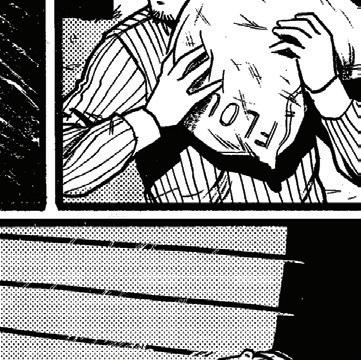





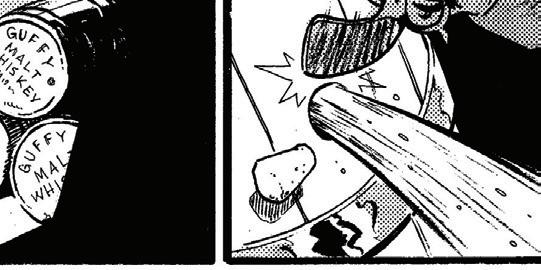
Hope Never to See It illustrates two exceptional incidents of occupational and guerrilla violence in Missouri during the American Civil War. The first is a Union spy’s two-week-long murder spree targeting civilians, and the second is a pro-Confederate guerrillas’ mutilation of almost 150 U.S. troops.
The men leading the atrocities (Jacob Terman, alias Harry Truman, and “Bloody” Bill Anderson) weren’t so different. Both the Union spy and the infamous Confederate guerrilla claimed to be avenging the deaths of their families, operated under orders from military officials, and were hard drinkers. Their acts outline the terror inflicted on both sides of the struggle.
This book’s use of sequential art displays these grisly realities to mute the war’s glorification and to help prompt a modern, meaningful reconciliation with the war. The moral ambiguities contained within this story call into question our understanding of the laws of war and the ways in which wars end.
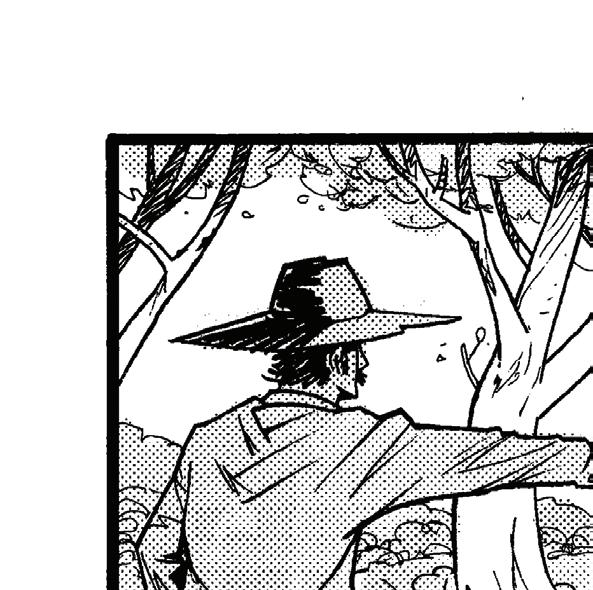


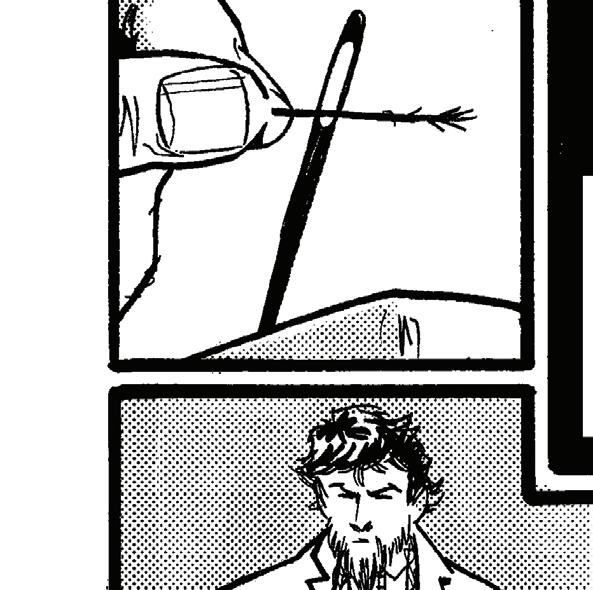

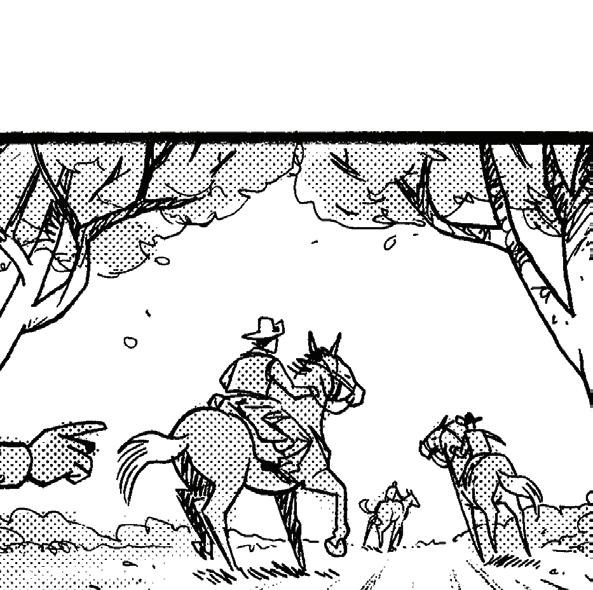
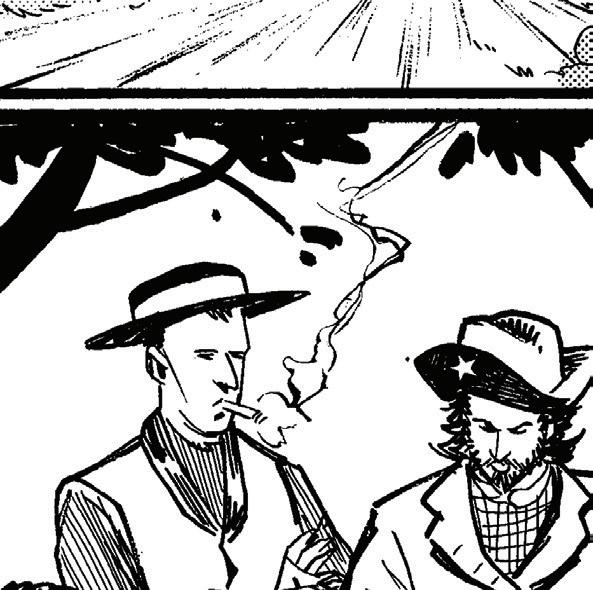
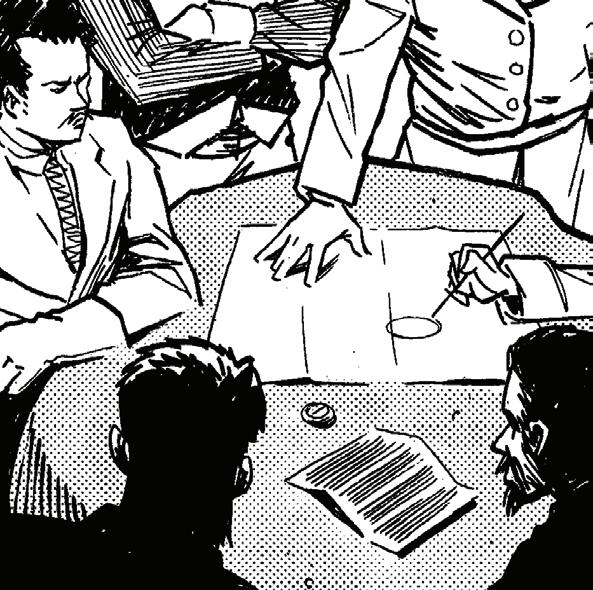




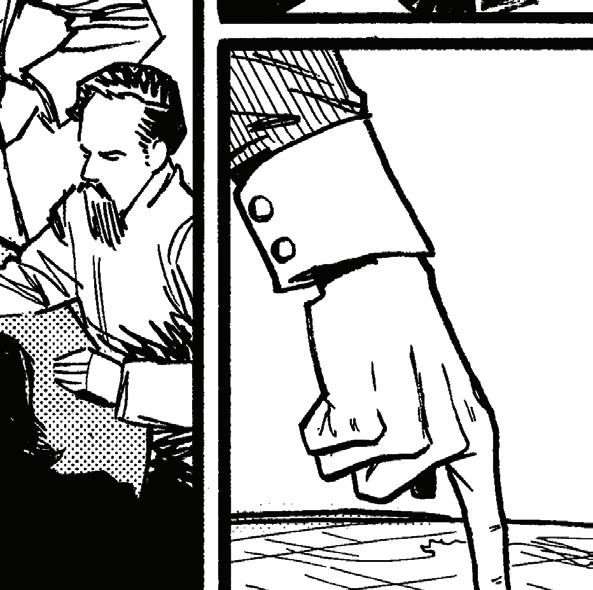



ANDREW FIALKA is associate professor of history at Middle Tennessee State University. He has codirected multiple digital history projects at the University of Georgia’s Center for Virtual History (eHistory.org). He lives in Murfreesboro, Tennessee.

ANDERSON CARMAN is an award-winning illustrator and sequential artist specializing in traditional ink, watercolor, and digital illustration in Atlanta, Georgia.

MARCH
7.875 x 11.25 | 216 PP. 176 B&W ILLUS., 1 TABLE, 3 MAPS PAPERBACK $19.95T 9780820369556 EBOOK AVAILABLE
FRYE GAILLARD is a former writer-in-residence in the English and history departments at the University of South Alabama. He is the author of thirty books, including With Music and Justice for All: Some Southerners and Their Passions; Cradle of Freedom: Alabama and the Movement That Changed America, winner of the Lillian Smith Book Award; The Dream Long Deferred: The Landmark Struggle for Desegregation in Charlotte, North Carolina, winner of the Gustavus Myers Award; and A Hard Rain: America in the 1960s (Georgia), an NPR best book of 2018. He lives in Mobile, Alabama.

APRIL
5.5 X 8.5 | 208 PP.
1 B&W IMAGE
PAPERBACK $29.95T 9781588385444
EBOOK
Compelling essays about those whose lives have impacted the fight for civil rights
and Other Mortals
Stories of Our Better Angels
frye gaillard
“Collected here are the greatest hits from decades of fearless, in-depth journalism on issues of race, culture, global politics, identity, and more. From Frye Gaillard’s earliest essay on South Africa to his recent interview with the daughter of the infamous governor George Wallace, this book serves as a testament to one of our country’s most vital and clear-sighted writers. Gaillard is a writer capable of peering back into the depths of what this country has been to divine what it still might become. His stories offer us hope.”
Charlotte Pence, director, Stokes Center for Creative Writing
Frye Gaillard did not set out to write this book. One day as he was thumbing through a cardboard box of his essays, columns, and profiles, he simply realized that he had done it. Each article told the story of a person standing against social injustice or exploring the pain and ambiguity of the human condition.
By blending interviews with well-known figures like Archbishop Desmond Tutu, Sidney Poitier, Vine Deloria, Mikhail Gorbachev, and Jane Goodall with lesser-known heroes like Rabbi Abraham Heschel (who marched from Selma to Montgomery), Regina Benjamin (a Black doctor who was integral to the grassroots efforts of Katrina recovery), Kathy Mattea (who wrote powerful songs about coal mining and its real effects on the people of Appalachia), and Elyn Saks (who pioneered modern mental illness treatments while dealing with her own schizophrenia), Gaillard celebrates the people who have tried to make things better.
While many of Gaillard’s subjects succeeded in what they were trying to do, others did not. Each story, however, contains a measure of inspiration. Against the backdrop of our turbulent time—our era of lesser angels on the rise—Gaillard asks, where would the rest of us be without them?
john k. bollard
“Protesting with Rosa Parks is deeply informed by the lives, and at times the deaths, of nearly a hundred African Americans as they traveled the country. This book is a model of how biography can bring social history to life across a span of almost two hundred years. Of special note is David Ruggles, in effect the first ‘freedom rider,’ a significant thinker and strategist whose willingness to put his body on the line repeatedly in the name of freedom was truly revolutionary. When we see someone today protesting inequality, at risk of being vilified, beaten, and arrested, we are witnessing the legacy of David Ruggles and the others in this outstanding book.” —Steven J. Niven, executive editor, Hutchins Center for African & African American Research, Harvard University
Protesting with Rosa Parks details the long and winding history of the intersections between Black activism and travel. John K. Bollard recounts the experiences of more than ninety-five people who stood up against the oppressive legality of Jim Crow on stagecoaches, trains, streetcars, steamboats, buses, planes, and even elevators. Beginning with the little-known Emiliano Mundrucu and the indefatigable David Ruggles, through John Lewis to Sandra Bland and Tyre Nichols, Bollard gives us the 190-year-long story of both influential civil rights leaders and private citizens who took a determined and dangerous stance against racism as they traveled. While the mainstream historical narrative often gives the impression that Rosa Parks acted alone (and first), this book reveals her refusal to move as part of a longstanding tradition of social commitment, sacrifice, and protest that continues today.
Protesting with Rosa Parks is a chronological, chaptered account of many brave activists who fought against discrimination where Black and white passengers shared confined spaces in close proximity. Focusing on incidents in which someone was denied a seat and the subsequent result of that denial, Bollard illuminates an unbroken stream of protest that strives to guarantee everyone the right to ride on our collective journey toward equality.

JOHN K. BOLLARD is the author of ten books and served as the first managing editor of the African American National Biography project at Harvard University’s W. E. B. Du Bois Institute for African American Research and as managing editor of African American Lives. Bollard has a PhD in English from the University of Leeds and has written extensively on medieval Welsh literature and history. He lives in Florence, Massachusetts.

Tommy Hart Jones


“Jones presents a deeply researched history of the Sautee Nacoochee region within White County, Georgia. Unlike local histories produced a century ago during the apex of similarly published works, A History of Sautee Nacoochee devotes significant attention to historical actors beyond white ‘pioneers.’ American Indians and African Americans appear throughout the manuscript. A History of Sautee Nacoochee thus achieves a level of diversity and inclusiveness that few earlier works of local history achieved.”
Keith S. Hébert, author of Cornerstone of the Confederacy: Alexander Stephens and the Speech That Defined the Lost Cause
Virtually every landscape is a palimpsest, created by the imprint, however ephemeral, that people have left everywhere they have been. As one peels back layers of history, the true nature of a place can be better understood. A History of Sautee Nacoochee does precisely this for a small Appalachian community with a remarkably long history.
Sautee Nacoochee is a rural community located in White County in northeastern Georgia. It is centered around two large valleys, Sautee, drained by Sautee Creek, and Nacoochee, drained by the Chattahoochee River. In the broadest terms, this book synthesizes an enormous amount of information from many disparate sources into





Mary Troy

a narrative that identifies historical contexts, that documents and incorporates sitespecific information, and that strives to illuminate the lives of the people who over many centuries of human occupation and in many different ways contributed to making Sautee Nacoochee what it is today. It is not a typical “pioneer” history. Indeed, Jones illuminates the lives of all the people who have occupied the valleys over many thousands of years and connects the deep past to the present.
TOMMY HART JONES, an eighth-generation Georgian, has spent his decadeslong career in support of historic preservation. He is retired from the National Park Service, where he was an architectural historian and cultural resource specialist in the Southeast Regional Office with a wide range of professional duties supporting the agency’s efforts to preserve, protect, and interpret historic sites, buildings, and landscapes. He worked for the Georgia Trust for Historic Preservation for many years and has had a variety of other clients, including the Atlanta History Center, local governments, and historical societies. He has authored dozens of studies on a wide variety of historic structures. He lives in Midtown Atlanta.

GUY GUGLIOTTA
GUY GUGLIOTTA is a prizewinning journalist and author with a long career as a national reporter for the Washington Post and as a foreign correspondent for the Miami Herald. His book Freedom’s Cap: The United States Capitol and the Coming of the Civil War was awarded starred reviews in Kirkus and Publisher’s Weekly and named one of the year’s best books by the Washington Post. He lives in New York City.

A vivid portrait of the Reconstruction South and the attempts to dismantle the KKK
Taking Down the Klan guy gugliotta
"A terrific read. The narrative is riveting, and Gugliotta’s brisk writing moves the plot, explains complicated political realities in accessible language, and gets the reader into the minds of the many characters swirling around the book’s explosive setting." —Jane Dailey, author of White Fright: The Sexual Panic at the Heart of America's Racist History
Grant’s Enforcer offers a gripping story of the early years after the Civil War and the campaign led by President Grant’s attorney general Amos T. Akerman to destroy the Ku Klux Klan. Akerman, a former Georgia slaveholder and the only southerner to serve in a Reconstruction cabinet, was the first federal lawman to propose using the Fourteenth Amendment to prosecute civil rights violations.
In 1871, Akerman and his allies brought the KKK to trial in South Carolina, choosing York County as their principal target. They believed that if they could break the Ku Klux in one small corner of the former Confederacy, they could break it everywhere. Within six months, the prosecutions and convictions in federal court of key Klan leaders and foot soldiers effectively eradicated the Klan for half a century.
Drawing on a wealth of primary sources, Guy Gugliotta tells the story in real time through the voices of those who bravely resisted the Klan in York County and those who perpetrated its crimes, and through the fierce Congressional debates in Washington, D.C., and Akerman’s efforts to overcome infighting within the Grant administration. Grant’s Enforcer rides with the Ku Klux on its way to a lynching, feels what it’s like to be lied to, beaten, spat at, and betrayed by white neighbors you have known all your life, and exults with York’s Black citizens when the tormenters are finally brought to justice.
Gugliotta uses newspapers, documents, and first-person stories, including thousands of pages of testimony under oath taken by a congressional joint committee tasked in 1871 to study the Ku Klux Klan, a breathtaking compilation of accounts by Ku Klux targets, their attackers, local and national politicians, public officials, and private citizens. The result is a vivid portrait of the Reconstruction South through the career of this surprising man.
The social activism and courage of MacArthur Cotton and others of his era
Mississippi’s Black Cotton
macarthur cotton with john obee foreword by nikole hannah-jones
NEWSOUTH BOOKS
“Cotton’s life, captured so powerfully in this moving memoir, shows us the 'everydayness’ of racial apartheid, and therefore the need, every day, to withstand it, to fight back, to refuse to back down, especially when it’s hard. He’s given us a blueprint, a model for us as ordinary people, who can, like he did and so many largely unknown others, become extraordinary in fighting for human dignity and freedom. This book is a gift for the ages.”
—Eddie S. Glaude Jr.
, author of We Are the Leaders We Have Been Looking For
The literature of the civil rights movement is replete with stories about the major actors in the movement, including, for example, Martin Luther King, but there is little focus on the MacArthur Cottons of the era: the young Black men and women who at great risk to their physical and mental health chose to become involved in the movement when so many others chose not to. Without these young Black people there would have been no movement, and what was accomplished with the Civil Rights Acts of the 1960s would never have happened.
This was particularly true in Mississippi, the most repressive of all fifty states, one that had sponsored state terrorism to ensure that white supremacy reigned supreme. Despite having no real reason to believe that change could happen, MacArthur Cotton and those like him believed that they had to act. In MacArthur’s case, his actions were in the tradition of his activist family, and he relates his involvement with many of the important figures in the Mississippi movement, such as Medgar Evers and Fannie Lou Hamer.
Importantly, he also honors others like him, who are largely unknown to history, such as the Greenes and McGees in Greenwood, who were waging their own war against their oppressive state. While having been imprisoned many times and having lived in a constant state of terror, Cotton persisted as a foot soldier in a war and, as with all veterans of wars, was left with emotional and psychological scars. Despite the toll that it took on him as a person, however, he remains a committed activist to this day.
MACARTHUR COTTON was a field secretary for the Student Nonviolent Coordinating Committee (SNCC) in Mississippi from 1961 through 1966. He later served as chairman of the Attala County NAACP and the Attala County Democratic Party. He lives in Kosciusko, Mississippi.
JOHN OBEE served in the civil rights movement in Mississippi in the 1960s and later worked at the Michigan Department of Civil Rights.
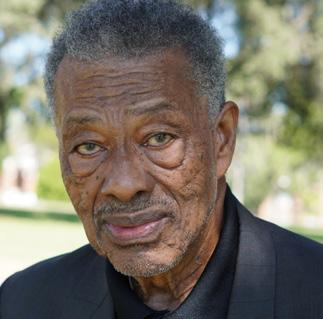


A comprehensive guide to the historic sites owned and operated by the state of Georgia
A Guide to Georgia's State Historic Sites
edited by jennifer w. dickey
“Dickey’s history of Georgia’s memorialization, commemoration, and memorymaking will fascinate tourists, students, and scholars alike. The travel guide format, focusing on the state’s sixteen official historic sites, is clever and appealing.”
Drew
A. Swanson, author of Remaking Wormsloe Plantation: The Environmental History of a Lowcountry Landscape
There’s Lots to See in Georgia provides a history of the Peach State’s state historic sites, including a brief history of each site, the process by which the sites were preserved or restored and became part of the state historic site system, and information to guide visitors as they tour each site.
The sixteen sites featured in this book capture more than fifteen hundred years of history of the place we now call Georgia, from the Woodland era through the mid-twentieth century. Included are Native American sites from the Woodland, Mississippian, and Cherokee periods, colonial-era sites, frontier settlement sites, antebellum plantations, Civil War sites, and a presidential retreat. No other book offers such comprehensive coverage of all the historic sites owned and operated by the state of Georgia.



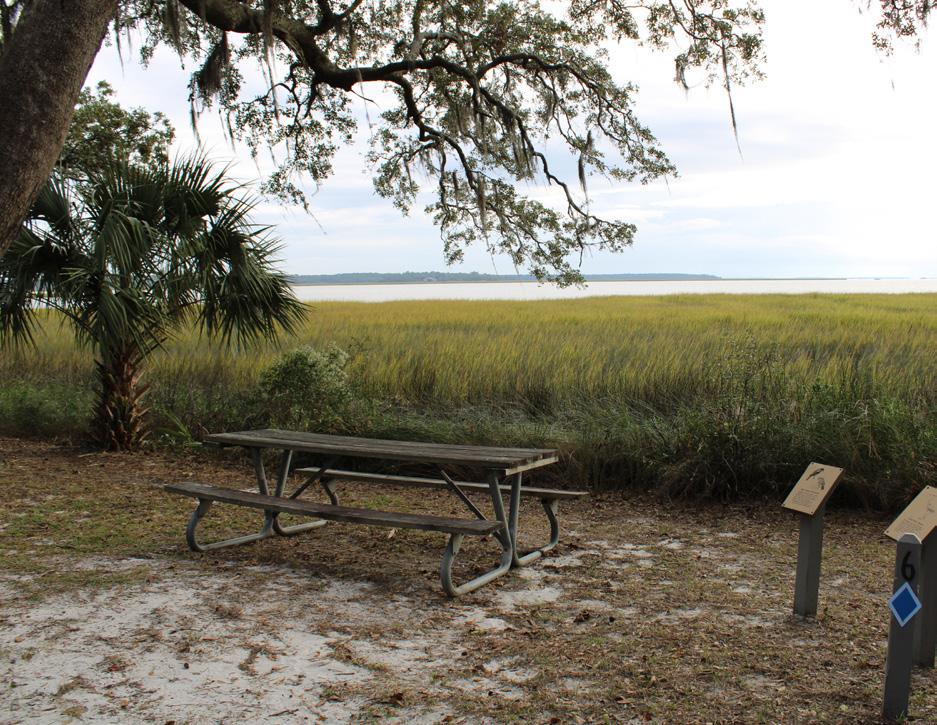
of the author

JENNIFER W. DICKEY is a professor of history and the coordinator of the museums and the history and public programs at Kennesaw State University. Previously the campus preservationist at Berry College, she continues to serve as a preservation consultant. She has worked for the National Park Service and the Historic Preservation Division of Georgia. She is the author of A Tough Little Patch of History: “Gone with the Wind” and the Politics of Memory and coauthor of Memories of the Mansion: The History of Georgia’s Governor’s Mansion (Georgia). She lives in Atlanta.
JUNE 6 X 9 |

ELLA RUTH TENNENT
(1855–1909) was a resident of Marietta, Georgia, who worked for the N. W. Ayer & Sons advertising agency and wrote for several periodicals, including Atlanta’s Southern Cultivator, the Old Homestead, Women’s Work, and eventually her own subscriptionbased publication, Tennent’s Home Magazine.
A taste of domestic life from a nineteenth-century household guide and cookbook
ella ruth tennent foreword by valerie j. frey
“After skimming the pages, the reader begins to make out individual voices in the recipes. Citizens of old Georgia begin to feel like real people. This homefocused primary source helps us ask new questions about the past and helps us to touch, smell, and taste that past in our modern kitchens.”
Valerie J. Frey, author of Preserving Family Recipes: How to Save and Celebrate Your Food Traditions
With its roots in the meetings of the Phoenix Agricultural Club of Marietta, Georgia, Ella Ruth Tennent’s House-Keeping in the Sunny South offers nearly eight hundred food recipes, over seventy formulas for household compounds or medicines, and eight essays on managing various rooms of the house. More than just a cookbook, this 1885 publication illuminates home life in Marietta, the Atlanta area, and greater Georgia in the last quarter of the nineteenth century.
The day-to-day details of the writing in this volume tell a larger story. When the preface states that the recipes are inexpensive to “meet the pressure of the times,” for example, it is hinting at the fact that the nation—and the South especially—was still recovering from an economic depression. Yet the cookbook also reveals a changing South. It is peppered with recipes from hotels and restaurants, claims contributors from twenty-two states, and calls for newly available commercial ingredients as well as exotic ones that demanded, at the time, global shipping networks. And the presence of chilled dishes between these covers also reveals how prevalent affordable year-round kitchen ice was becoming. But this remains a culinary guide from a time and place poised at the cusp of transition. It includes instructions for extracting the “jelly” from a calf’s foot, for example, alongside gelatin recipes dependent on store-bought thickener. House-Keeping in the Sunny South was intended for Georgia’s rapidly changing kitchens, but there is much for modern audiences to learn (and taste) from these pages.
MAY
5 X 8 | 312 PP. PAPERBACK $29.95T 978820374062 EBOOK AVAILABLE
An exploration of Georgia’s culinary heritage and how it connects us to our present tastes
Seeking Our State's Oldest Written Foodways and the Stories behind Them valerie j. frey
"Frey has effectively created a bridge between kitchens in the past and those of today. There is no other in-depth look at Georgia foodways that can even compare to the scope of this manuscript."—Rebecca Lang, chef, author of Y’all Come Over
Georgia’s Historical Recipes is an exploration of our state’s oldest recipes from the antebellum period through World War II, as painstakingly researched by Georgia archivist Valerie J. Frey. This volume begins with a discussion of old recipes as primary sources and what they can tell us about the history and culture of their era and how to bring them to life in modern kitchens. Frey then moves into fifty sections that can be read alone yet allow readers to build an understanding of how foodways evolved over time.
Some sections highlight a single recipe, illustrating how changes in technology, agriculture, transportation, communication, and social patterns led to changes in Georgia kitchens. Most of the recipes are previously unpublished, waiting in archives to be rediscovered. Other sections explore our oldest cookbooks, offering biographical and cultural background information that makes them more meaningful. For the first time, Georgians have a list of the state’s early cookbooks and its cooking experts. Readers will learn where to find Georgia’s oldest recipes and discover many examples to whet their appetites literally and figuratively for a taste of Georgia’s past.

VALERIE J. FREY is a writer and archivist from Athens, Georgia, with projects focusing on genealogy, social history, and foodways. Her archives career began with a Junior Fellowship in the Manuscripts Division at the Library of Congress, and she went on to serve as manuscripts archivist at the Georgia Historical Society. She later became the education coordinator of the Georgia Archives, where she developed public service programs. She is the author of Preserving Family Recipes: How to Save and Celebrate Your Food Traditions (Georgia).


An Environmental History donald edward davis
A WORMSLOE FOUNDATION NATURE BOOK
WINNER: Charles A. Weyerhaeuser Book Award, Forest History Society
“This is the most comprehensive environmental history of the American chestnut to date and an important contribution to the literature. Donald Edward Davis’s discussion of the chances of reintroducing the tree to our forests is must reading for all who are involved in this effort.” —Ralph H. Lutts, author of Nature Fakers: Wildlife, Science, and Sentiment
MAY | 6 X 9 | 424 PP. | 4 COLOR & 25 B&W IMAGES | EBOOK AVAILABLE PAPERBACK $24.95T | 9780820374529 | HARDBACK $34.95T | 9780820360454
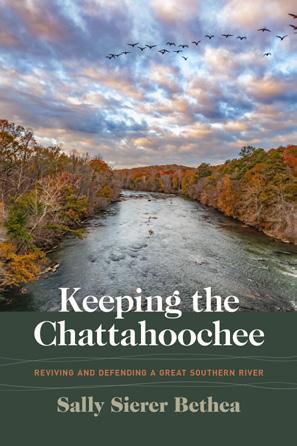
Reviving and Defending a Great Southern River sally sierer bethea
A WORMSLOE FOUNDATION NATURE BOOK
“Sally Bethea is a force of nature. Here the river activist, who made the Chattahoochee run cleaner, decides to deepen her relationship to the watershed. On foot, slowly, paying close attention, she travels repeatedly over the course of a year through a forest to the river. These explorations recall her two decades of stunning success—a courageous and unstoppable defender of nature looking forward, looking back. Impressive all around, this beacon of a book inspires, enlivens, and offers hope.” —Janisse Ray, author of Wild Spectacle
MAY | 5.5 X 8.5 | 232 PP. | 16 B&W IMAGES | EBOOK AVAILABLE
PAPERBACK $20.95T | 9780820374512 | HARDBACK $24.95T | 9780820364322
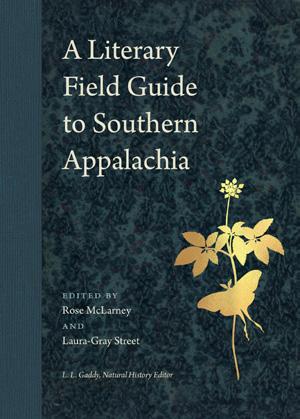
edited by rose mclarney, laura-gray street, and l. l. gaddy
A WORMSLOE FOUNDATION NATURE BOOK
“This book—as much a collection of poetry as a work of science—can be enjoyed either in the field or indoors. Small enough to carry in a backpack, it could function as a companion on an outing to wood, field, or stream. Or it could be read on a quiet winter’s evening by the fire while planning the next season’s hikes or simply contemplating nature’s many wonders.” —Chapter 16
MARCH | 7 X 9.25 | 224 PP. | 61 B&W IMAGES
PAPERBACK $21.95T | 97808203674505 | HARDBACK $25.95T | 9780820356242

A Story of Democracy in the Balance
cynthia tucker and frye gaillard
NEWSOUTH BOOKS
“In this short but impactful text the coauthors theorize that the common thread in our shared history will always tie back to the American South and its history of racism. Rich in primary source references, the book is a must read for those wondering how we got where we are in today’s age of politics and racial reckoning.”
—Booklist
MAY | 5.5 X 8.5 | 176 PP. | EBOOK AVAILABLE
PAPERBACK $19.95T | 9781588385628 | HARDBACK $25.95T | 9781588384560

A Modern Family Memoir steve majors
CRUX: THE GEORGIA SERIES IN LITERARY NONFICTION
“What are the complex histories that roil under our composed, accomplished surfaces? Steve Majors has brought his to the fore. He’s written a gripping, moving, and wrenchingly honest book about his life that I couldn’t put down. He was born to write.” —Pia Z. Ehrhardt, author of Famous Fathers & Other Stories
MARCH | 5.5 X 8.5 | 280 PP. | EBOOK AVAILABLE
PAPERBACK $22.95T | 97808203674499 | HARDBACK $30.95T | 9780820360317

A Founder’s Journey from Slave Trader to Abolitionist
michael l. thurmond
“Michael Thurmond’s James Oglethorpe, Father of Georgia adds an inspiring new chapter to Georgia’s origin story. Oglethorpe’s ‘intellectual friendships’ with Ayuba Suleiman Diallo and Olaudah Equiano, two formerly enslaved Black men, shaped the prehistory of abolitionism and fueled the advent of the modern civil rights movement.” —Ambassador Andrew Young
March | 6 x 9 | 256 pp. | 2 maps, 1 table, and 31 B&W images | ebook available
PAPERBACK $22.95T | 9780820366005 | HARDBACK $29.95T | 9780820366043
Carl and Sally Gable Fund for Southern Colonial American History

Edited by JAMES F. BROOKS and JEREMY M.
JAMES F. BROOKS is the Carl and Sally Gable Distinguished Professor of History at the University of Georgia. He is the author of Captives & Cousins: Slavery, Kinship, and Community in the Southwest Borderlands. He has also edited several volumes, including Small Worlds: Method, Meaning, and Narrative in Microhistory. Brooks serves as senior consulting editor of the Public Historian.
JEREMY M. MOSS is the chief of science and resource stewardship and archaeologist at Pecos National Historical Park in New Mexico. He has worked for the National Park Service for more than twenty years in archaeology, cultural and natural resource management, and historic preservation.
JUNE
6 X 9 | 288 PP.
56 B&W IMAGES, 7 DIAGRAMS, 4 TABLES, I MAP
PAPERBACK $32.95S
9780820373522
HARDBACK $119.95X
9780820373515
EBOOK AVAILABLE
Carl and Sally Gable Fund
Essays that wrestle with key tensions in the field of public archaeology
edited by james f. brooks and jeremy m. moss
In Public Archaeology for the Twenty-First Century, James F. Brooks and Jeremy M. Moss have collected essays from twenty-seven scholars and community members to illuminate archaeological sites like ancient “water courts” at Mound Key in Florida, the lost Black cemetery at Nashville Zoo, fur-trade-era Fort Michilimackinac, and Arizona’s Gila Bend Internment Camp. Each case offers readers an experience that enlivens the past while speaking to the present.
These essays wrestle with key tensions in the fields of public archaeology. What do we mean by “public”? Is this site public facing or public participating? Does “public” simply imply simplifications in scholarly rigor or does it require more creative attention to methods of analysis and interpretation to render stories sensible for those beyond the academy?
In the broadest sense, these chapters explore the relationship between archaeological practice, the representation of archaeology and history, and our varied publics. This requires not only consultation with varied stakeholders but also collaborative partnerships with descendant communities who have direct connections to the heritage resources we wish to share.
CONTRIBUTORS: Tara Beresh, David Brown, Molly Boeka Cannon, Anna S. Cohen, Meg Gaillard, Matthew C. Guebard, Kathlyn Guttman, Thane Harpole, Sharlot Hart, Katherine Hodge, Koji Lau-Ozawa, Philip Levy, Erika Malo, Tori Mason, Ashley McCuistion, Jeanne M. Moe, Kristin M. Montaperto, David Muraca, Elizabeth C. Reetz, Jada Robison, Iraida Rodriguez, Stephanie T. Sperling, Kate Sproul, Jessica Taylor, Victor D. Thompson
An in-depth look at the place of television in American society and its historical value
edited by lauren bratslavsky and elizabeth peterson
THE PEABODY SERIES IN MEDIA HISTORY
This anthology critically evaluates archives and archival processes that collect, order, and preserve elements of television as historically, culturally, socially, politically, and economically significant material.
What do we know about how television moved from ephemeral broadcasts and mounds of paperwork documenting bureaucratic and creative processes to become historical material housed in archives? This book’s guiding principles are to interrogate where television as historical material “lives” and to collect the stories of some ways television preservation has been and continues to be deeply circumstantial and idiosyncratic.
Bringing together work by academics, archivists, and practitioners, the book offers insights into the archival processes that confer television programs with historical value. With a focus on television’s archival spaces, the book contributes more broadly to theories, histories, and practices of archiving. Likewise, the theories and questions about archives provide insights into the specificities of the medium, the relations between technologies and culture, the political economy of the culture industries, and the minutiae of television’s “place” in American society.
CONTRIBUTORS: Ruta Abolins, Lynne Carmichael, Kate Cronin, Caroline Frick, Owen Gottlieb, Eric Hoyt, Mary Huelsbeck, Pauline Lampert, Hugo Ljungbäck, Maureen Mauk, Quinlan Miller, Walter Podrazik, Olivia Johnston Riley, Amanda Smith, Hannah Spaulding, Lesley Stevenson, Matt St. John
LAUREN BRATSLAVSKY is an associate professor at Illinois State University’s School of Communication. Her research related to mass media and archives is published in American Journalism, the Moving Image, Film & History, and the inaugural issue of Journal of 20th Century Media History. She is also involved with the Library of Congress’s Radio Preservation Task Force.
ELIZABETH PETERSON is a digital collections librarian at the University of Oregon. She has published articles in the Moving Image, Film History, Oregon Historical Quarterly, and Iluminace. She is the author of Tribal Libraries in the United States: A Directory of American Indian and Alaska Native Facilities.
JUNE 6 X 9 | 288 PP. 15 B&W ILLUS., 6 TABLES PAPERBACK $29.95S
9780820373898
HARDBACK $119.95X 9780820373881
EBOOK AVAILABLE
MELANIE BENSON TAYLOR
is professor of English and creative writing and of Native American and Indigenous studies at Dartmouth College. She is the editor of The Cambridge History of Native American Literature and the Norton Critical Edition of Faulkner’s Light in August, and the author of The Indian in American Southern Literature; Reconstructing the Native South: American Indian Literature and the Lost Cause; and Disturbing Calculations: The Economics of Identity in Postcolonial Southern Literature, 1912–2002 (both Georgia).
Uncovering the haunting realities within the “weird” web of our entwined social, racial, economic, and natural ecologies
melanie benson taylor MERCER UNIVERSITY LAMAR MEMORIAL LECTURES
How do we read southern literature in a postplantation, postregional, and posthuman moment? How do we address the urgent contemporary catastrophes of the Anthropocene in these newly leveled landscapes? Put simply, how do we parse the levels of human responsibility—both for apocalypse and for deliverance— in contexts where settler-colonial and racial capitalist histories dramatically shape our reality?
Reading modern and contemporary southern literary texts from a variety of perspectives, these lectures engage the new materialist, object-oriented ontologies that critique and decenter human agency while uncovering the lasting, determinative, haunting realities of humanity’s detention within what Timothy Morton calls the “weird” web of our entwined social, racial, economic, and natural ecologies.
As a concept in the burgeoning conversation about Anthropocenic disaster and climate emergency, the “weird” is a powerful way to conceptualize not just human hubris but also humility: we are no different from, no more powerful than, any other living or inanimate objects—neither the organisms that take up residence in our bodies nor the myriad things that we imagine we create, fashion, patrol, and control.
JUNE
5.5 X 8.5 | 112 PP.
PAPERBACK $20.95T
9780820373843
HARDBACK $119.95X
9780820373836
EBOOK AVAILABLE
The Life of Elisha Tyson
edited by joshua d. rothman
Descended from German Quakers who immigrated to Pennsylvania in the late seventeenth century, Elisha Tyson was born in 1749. As a young man he became wealthy in the milling business in northeastern Maryland before moving in the early 1780s to Baltimore, where he grew even wealthier and established a reputation as a prominent member of the city’s business community. Over the course of more than three decades in the late eighteenth and early nineteenth centuries, Tyson helped found abolition societies, supported schools for free Black children, and contributed to the creation of numerous Black institutions and benevolent societies. He filed freedom petitions on behalf of enslaved people and pushed for the passage of liberalized manumission laws in Maryland. He used some of his fortune to assist Black people who claimed they were illegally held in bondage to sue for their liberty, and he confronted slave traders who kidnapped free Black Americans with the aim of selling them into slavery. By the time he died in February 1824, Elisha Tyson had personally aided in the liberation of perhaps two thousand Black people.
Yet the only biography published about this remarkable man was penned shortly after his death by John Shoemaker Tyson, Elisha Tyson’s nephew. In A Pioneer in the Cause of Freedom, Joshua D. Rothman—a preeminent historian of slavery and abolition—seeks to remedy that silence. Along with an annotated version of that nineteenth-century biography, Rothman provides a thorough introduction to Elisha Tyson’s religious, political, and ideological worlds as well as a set of selected documents that illuminate some of Tyson’s work.


JOSHUA D. ROTHMAN is professor of history and chair of the Department of History at the University of Alabama. He is the author or editor of four previous books, including Reforming America, 1815–1860: A Norton Documents Reader; Flush Times and Fever Dreams: A Story of Capitalism and Slavery in the Age of Jackson (Georgia); and most recently, The Ledger and the Chain: How Domestic Slave Traders Shaped America, which was a finalist for the Harriet Tubman Book Prize as well as the Paul E. Lovejoy Prize from the Journal of Global Slavery. He is also the codirector of Freedom on the Move: A Database of Fugitives from American Slavery: www.freedomonthemove.org.
Stories of Contemporary Native American Women

CAROLYN ROSS JOHNSTON is the Elie Wiesel Professor of Humane Letters at Eckerd College, where she teaches in the history and American studies departments. She is the author of five books, including Sexual Power: Feminism and the Family in America.
TERRI BAKER (Choctaw) was a professor of English at Northeastern State University. In addition to coediting Women Who Pioneered Oklahoma: Stories from the WPA Narratives, Baker also published essays in Cultural Survival Quarterly, Journal of the Gilcrease Museum, and Oklahoma Humanities. She also served as a research consultant for the Gilcrease Institute of American Art.
Stories of Contemporary Native American Women
carolyn ross johnston and terri mckinney baker
Living Indigenous Feminism is a bricolage of historical research and historiography, poetry, interviews, biographies, memoirs, and stories—both traditional and contemporary. This book poses the question of what southern and western history would look like if viewed through the eyes of a diverse sample of Indigenous women. The answer is that these Indigenous women have been “living feminism” in ways that shed new light on these histories, while showing how their lives and visions can offer fresh guidance for the turbulent present and the shared future we are making now.
This book features Native women of many different nations, cultures, and regions, including Cherokee, Choctaw, Comanche, Seminole, Seneca, Iroquois, Navajo, Salish and Kootenai, Kiowa, Muscogee, Creek, Yankton Dakota Sioux, Fort Sill Apache, Cheyenne, Red Lake Ojibwe, Ho-Chunk, Seneca, Tonawanda Band, Standing Rock Sioux, Lakota Sioux, Blackfeet, Laguna Pueblo, and San Ildefonso Pueblo. Indigenous women, the authors contend, have always lived a pattern of gender power and balance. Indigenous feminism is traditional and, at the same time, a source of fresh insights about how we can sustain balanced, inclusive, meaningful lives through times of challenge and change.
Although traditional academic scholarship is an individualistic and solitary venture, this approach is relational and organic, with the living Indigenous women who shared their stories with the authors, and with the Indigenous women who lived before them, whom the authors met on the pages of scattered historical records. Their stories suggest powerful new meanings to what “living feminism” can do when we do it together.
JUNE
6 X 9 | 320 PP.
21 B&W IMAGES
PAPERBACK
$27.95t
9780820373775
HARDBACK $119.95X
9780820373768
EBOOK AVAILABLE
A New Era in Constance Fenimore Woolson Scholarship edited by kathleen diffley, caroline gebhard, and cheryl b. torsney foreword by anne boyd rioux
The eighteen essays in this volume explore Constance Fenimore Woolson’s prodigious range of place, from the Great Lakes to the defeated South and across storied Europe to the Mediterranean. Her achievements come alive in this enlightening collection, shedding light on the full scope of her professional writing career.
The first section, “A Writer’s Experiments,” reveals that Woolson’s play with familiar genres and unfamiliar characters began during the 1870s and extended until her death in 1894. Consistently, she tested the limits of representing women’s labor and their erotic desires.
The second section, “Postbellum Souths,” follows Woolson’s travels through a land ravaged by war and injustice. Drawing on theories of travel, collective memory, the Lost Cause, religious controversy, and a race-bound region, these essays expose both the smugness of visitors and the agendas of residents that Woolson was among the first postwar writers to portray.
The third section, “Through an International Lens,” considers expatriate perceptions of European and Mediterranean cultures as well as misconceptions about the Gilded Age United States. Here and throughout this volume, accounts of Woolson’s travel sketches mingle with those of her fiction and poetry, while her encounters with the writing of other Americans demonstrate how regularly Woolson made her century’s literary terrain more subtle and complex.
CONTRIBUTORS: Kristin M. Comment, Edoarda Grego, Heather Hartley, Sharon Kennedy-Nolle, John Wharton Lowe, Etta M. Madden, Kathryn B. McKee, Lisa Nais, Anne Boyd Rioux, Susan L. Roberson, Aaron J. Rovan, Sidonia Serafini, Katherine Barrett Swett, Karen Tracey, Lisa West
KATHLEEN DIFFLEY is professor emerita at the University of Iowa and director of the Civil War Caucus. She is the author of The Fateful Lightning: Civil War Stories and the Magazine Marketplace, 1861–1876 (Georgia).
CAROLINE GEBHARD is professor emerita at Tuskegee University. She is a founding member of the Woolson Society and coeditor of Post-Bellum, Pre-Harlem: African American Literature and Culture, 1877–1919.
CHERYL B. TORSNEY Is program manager for leadership and career studies at Temple University. She is the author of Constance Fenimore Woolson: The Grief of Artistry (Georgia).
MARCH 6 X 9 | 264 PP. 10 B&W IMAGES
PAPERBACK $29.95S
9780820369846
HARDBACK $119.95X 9780820369839
EBOOK AVAILABLE
VALENZANI has taught U.S. history at various Italian universities. He has published several articles in both English and Italian on the history of American tourism, including “La sfida sul ruolo del turismo negli Stati Uniti: lo scontro dimenticato dei turbolenti anni Settanta” in Acoma and “Advertising the Deep South in 2018: An Analysis of Destination Image through Louisiana, Mississippi, Alabama, and Georgia Travel Guides” in Excentric Souths.
An
Deep South Tourism Promotion in the Carter Era giuliano santangeli valenzani
Great Times Down South examines advertising materials from 1976 to 1981, including brochures, booklets, advertisements, and radio and TV spots, used by state tourism bureaus in Alabama, Georgia, Mississippi, and South Carolina. The chosen period, known as the Carter era, marked “southern fashion” and economic prosperity in the Sunbelt.
Analyzing the strategies, rhetoric, images, and themes employed by these tourism bureaus domestically and internationally offers a unique look into the prevailing conception of the South as marketed and perceived externally. A noticeable shift in the tourist image of the South occurred in the late 1970s, aligning with significant changes in southern culture and society. While the 1970s are acknowledged for altering the perception and symbolic role of the South in American culture, little research explores how these changes influenced the region’s promotional image. Prevailing views extend the classic Old South imagery into the 1970s, but Giuliano Santangeli Valenzani contends that the roots of the current, elusive image of the South can be precisely traced in advertising materials designed to attract visitors during the 1970s.
APRIL
6 X 9 | 264 PP.
11 B&W IMAGES
PAPERBACK $29.95S
9780820373324
HARDBACK $119.95X
9780820373317
EBOOK AVAILABLE
A compelling history of the epic clash between two
How Dave Herron Beat Bobby Jones in the 1919 U.S. Amateur steven schlossman and kari thomas
In 1919, at Oakmont Country Club, seventeen-year-old Bobby Jones fought his way to the finals for a chance to make history as the youngest winner of the U.S. Amateur Championship. Standing in his way was twenty-one-year-old Dave Herron, a Pittsburgh native and former Oakmont caddie. Despite his relatively unknown status and to the shock of many, Dave beat Bobby with the most spectacular golf—under par at Oakmont—in U.S. Amateur history.
Upset at Oakmont is a dual biography of two gifted child athletes in early twentieth-century America. One, in the 1920s, would become as famous as Babe Ruth; the other would be quickly forgotten and his victory forever tarnished. Both children of affluence, their pathways to the 1919 U.S. Amateur were starkly different because of their differing dispositions, their parents, the impact of place (“New South” Atlanta vs. Steel-City Pittsburgh), and the timing of World War I in shaping their adolescence.
Rigorously researched, Upset at Oakmont adds new dimension to understanding the revolution in American golf that started with Francis Ouimet’s victory at Brookline in 1913. Employing new statistical data to challenge previous narratives, this book recreates the epic clash between Jones and Herron in exciting detail, while employing novel empirical methods to advance scholarship on the “Golden Era” of American amateur golf.


STEVEN SCHLOSSMAN is a professor of history and public policy at Carnegie Mellon University. He is the author of three books: Chasing Greatness: Johnny Miller, Arnold Palmer, and the Miracle at Oakmont; Foxholes & Color Lines: Desegregating the U.S. Armed Forces; and Transforming Juvenile Justice: Reform Ideals and Institutional Realities, 1825–1920 His writing on golf has also appeared in Through the Green, The Golf, Pittsburgh Quarterly, and Western Pennsylvania History.
KARI THOMAS is a PhD student at Carnegie Mellon University. She has coauthored, with Schlossman, several articles in The Golf and “The Young Americans” in Through the Green.
MAY 6 X 9 | 348 PP. 40 B&W IMAGES, 19 TABLES
AVAILABLE

LISA C. HUEBNER is professor of women’s and gender studies at West Chester University and the author of Catheters, Slurs, and Pickup Lines: Professional Intimacy in Hospital Nursing.
SAMANTHA JEUNE is a graduate of social work at Temple University and the coauthor of a chapter in Difficult Discussions: Issues and Ideas for Engaging College Students in Peace and Justice Topics.
ODETTE KOLENKY is a graduate student in public health at George Washington University.
An
Women of Color Students at a White University lisa c. huebner, samantha jeune, and odette kolenky SOCIOLOGY OF RACE AND ETHNICITY
What invisible barriers do Black and other self-identifying women of color students face while thriving on a college campus that excludes them? How do these experiences challenge and transform meanings of diversity, equity, and inclusion, especially as they relate to student success?
In this three-year ethnographic study of women of color undergraduate students, Lisa C. Huebner, Samantha Jeune, and Odette Kolenky found that while thriving, women of color students suffered what they describe as “a daily normal” of harassment and erasure. At the same time, however, they excelled, often graduating with many academic and cocurricular achievements.
Celebrated by the university as successful students but also ignored by it, they felt alone, deceived, and exploited by the very university system that was dedicated to helping them. This book offers a rare glimpse into the successes we take for granted. Centering the voices of women of color students, this book offers a new story of how successful women of color overcome barriers no one else seems to see and, through their experiences and insights, offers recommendations to all of us who care about diversity, equity, and inclusion.
JULY
6 X 9 | 184 PP.
PAPERBACK $29.95S
9780820373614
HARDBACK $119.95X
9780820373607
EBOOK AVAILABLE
An accounting of the collective activism and social unrest exhibited in 2020
2020 Racial Justice Uprisings
eileen o’brien
SOCIOLOGY OF RACE AND ETHNICITY
For activists working for racial justice for decades, the year 2020 stood out from the rest. More people seemed to care about racism than ever before. Due to this unprecedented surge, was anything more accomplished than in prior efforts?
Through interviews with uprising participants (a mix of firsttime protesters and seasoned veterans; from both large cities and smaller towns), participant observation from three U.S. cities, and secondary data sources on U.S. and global 2020 protest actions, Eileen O’Brien documents what exactly was different about 2020 from a boots-on-the-ground vantage point.
Participants in the uprising drew a sense of meaning being part of something larger than themselves and were able to grieve racist violence collectively during a lockdown. They also created beautiful protest art out of plywood made necessary by white supremacist counterprotesters’ destruction of local businesses. They toppled Confederate monuments and felt that sentences like Derek Chauvin’s murder conviction or the three killers of Ahmaud Arbery on federal hate crime charges were rare victories only made possible through their activism. Later, many went back to business as usual after 2020, broader societal antiracist changes proved elusive, and backlash was swift. Yet, cross-racial interest convergence occurred for a brief antiracist moment, and “the struggle itself was redemptive.”
2020 Racial Justice Uprisings

EILEEN O’BRIEN is professor of sociology at Saint Leo University, worldwide. She is the author or coauthor of several books, including The Racial Middle: Latinos and Asian Americans Living beyond the Racial Divide, Whites Confront Racism: Antiracists and Their Paths to Action, and White Privilege: The Persistence of Racial Hierarchy in a Culture of Denial.
JUNE 6 X 9 | 231 PP. 11 B&W PHOTOS, 2 TABLES PAPERBACK $29.95S 9780820373737 HARDBACK $119.95X 9780820373720 EBOOK AVAILABLE

DANIEL MENDIOLA is an assistant professor of history at Vassar College.
A narrative that employs archival records to fill critical gaps in Mosquito history
The Mosquito Confederation is the first historical monograph to offer a thorough, chronological narrative of the rise and decline of the Mosquito Confederation: a powerful alliance of Amerindian and African-descended peoples that dominated much of Central America’s Caribbean coast throughout the eighteenth century.
This study addresses a straightforward set of questions: Who were the principal actors facilitating Mosquito expansion? What specific practices did they implement? And how did these processes shape the competing Spanish and English conquests in the region?
The specific answers to these questions vary over place and time, yet the overarching argument is that the rise and decline of the Mosquito Confederation—a process that depended far more on the novel practices of Mosquito leaders than on outside, colonial influences—was the driving force shaping imperial outcomes in the region. This research derives from a substantial body of previously uncited sources, especially from the National Archive of Costa Rica. Since Mosquito fleets routinely stopped in Costa Rican ports to trade and gather supplies, the Costa Rican archival record is both uniquely large and uniquely insightful. These sources fill critical gaps in Mosquito history, especially in the first half of the century, making it possible for the first time to write a chronological narrative of contextualized events throughout the century.
APRIL
6 X 9 | 256 PP.
2 MAPS
PAPERBACK $29.95S
9780820369624
HARDBACK $119.95X 9780820369648
EBOOK AVAILABLE
collective biography of
The Pardoned Pirates of the Bahamas
steven c. hahn
AMERICAN PLACES
In 1718, the British crown in the Bahamas pardoned 209 mariners accused of piracy. In A Pirate’s Life No More, Steven C. Hahn explores the lives of these “retired” pirates. While there are a number of “famous” names on that list—Benjamin Hornigold, Charles Vane, and Palsgrave Williams, for example—the vast majority of the pardoned are “mostly nobodies.” By focusing holistically on pirates—and on the pirates who aren’t famous— the book reclaims their humanity, connects the story of piracy at sea with the land-based communities that sometimes supported it, and illuminates the entangled histories of far-flung places in the Atlantic world. This study reveals that, for most individuals, forays into piracy were fleeting and opportunistic. Moreover, class, age, and regional divisions beset the pirate community, thereby precluding adherence to any single ideology justifying their actions. The pardon was most attractive to mariners possessing greater social and economic capital, which explains why so many of them were able to return to their homes and quickly return to honest maritime work.
In addition to the standard sources employed by maritime historians, Hahn utilizes local administrative records from Britain and its American colonies, such as property, court, and church records. In so doing, he sheds new light on the ordinary activities in which the sailors were engaged when not involved in piracy and explores how they coped in the Bahamas and elsewhere after being pardoned. What emerges in this collective biography, then, are pirates who were mariners—of course—but also husbands, fathers, parishioners, and property owners.
e Pardoned Pirates of the Bahamas
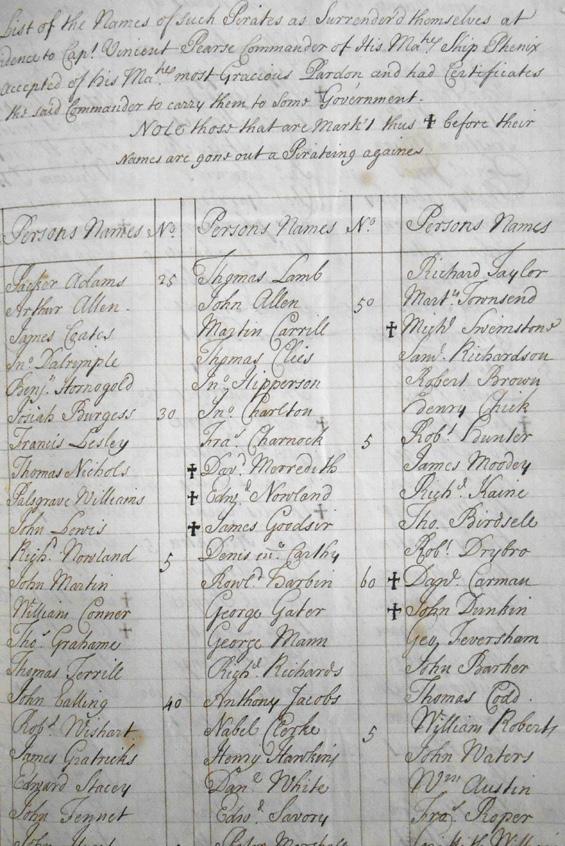
STEVEN C. HAHN is a professor of history at St. Olaf College. His previous work has focused on the Muskogee (Creek) Nation and the southern British colonies. He is the author of two books, The Invention of the Creek Nation, 1670–1763 and The Life and Times of Mary Musgrove. He lives in Northfield, Minnesota.
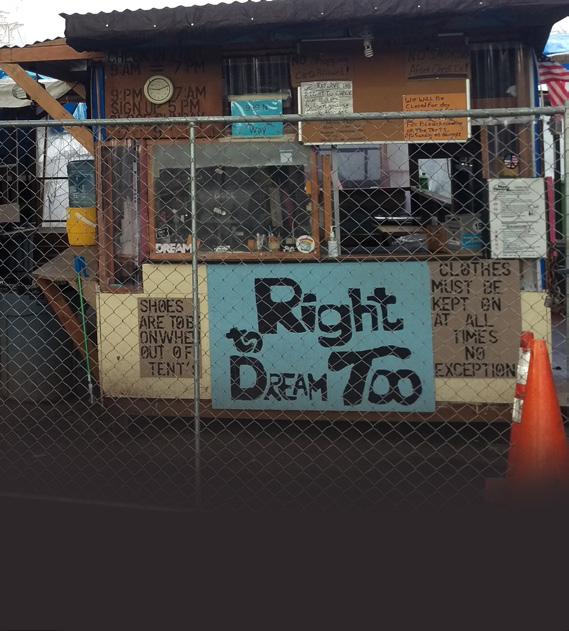
STEPHEN PRZYBYLINSKI is an assistant professor of geography at Michigan State University and the coeditor of Theorizing Justice: A Primer for Social Scientists.
How the injustices surrounding Portland’s encampment communities reflect the limits of liberal property more broadly
stephen przybylinski
GEOGRAPHIES OF JUSTICE AND SOCIAL TRANSFORMATION
With the rise of homelessness in many U.S. cities, municipal governments are sanctioning organized encampments as an official strategy for sheltering unhoused people. Examining the shortcomings and consequences of these municipal policies, The Injustice of Property explores how unhoused individuals living in self-managed encampments navigate and organize themselves within and against the confines of liberal property systems. Through ethnographic research in Portland, Oregon, a paradigmatic city in advancing this model of homeless shelter, Stephen Przybylinski details the everyday struggles of selfmanaged encampments to highlight how key contradictions inherent to liberal ideology maintain property as a means of structuring sociopolitical equality. He argues that justice cannot be realized for unhoused communities within the liberal model of private property due to how liberalism and liberal ideology prioritize the rights and values of property over the personal rights of self-governance.
JULY
6 X 9 | 184 PP. 8 B&W IMAGES
PAPERBACK $29.95S
9780820373645
HARDBACK $119.95X
9780820366401
EBOOK AVAILABLE
The Injustice of Property is a conceptually robust and empirically rich account of the limits of liberal thinking regarding what “just” property relations look like for unhoused and housed people alike. The book shows that while encampment communities struggle to establish alternative property relationships to the traditional model of private ownership, the injustices that residents of encampments face provoke a necessary reevaluation of how beneficiaries of property systems influence who can become housing stable and on which terms. This insightful book reveals how the injustices surrounding Portland’s encampment communities reflect the limits and injustice of liberal property more broadly.
Through eighteen years of field research, dialogues with colleagues, deep involvement in the food movement community in Chicago, and introspection, Pancho McFarland asks, Is the loosely connected network of Black and Indigenous land stewards and food warriors in Chicago an anticolonial force for the liberation of all our relations?
This examination of a sector of the food autonomy movement in Chicago provides important new ways of understanding race relations, gender, sexuality, spirituality, pedagogy, and identity, and their importance to the dynamics of social movements. Additionally, the book explores how revolutionary culture, principles, and organization of American Indigenous, diasporan Africans, anarchist Mexicans, and others have been adopted, adapted, or rejected in the food movement.
In this autoethnography of the food movement, McFarland argues that at our best we work to establish a new society like that theorized and enacted by Indigenous and Black anarchists. However, the forces of Wetiko (colonialism, capitalism, heteropatriarchy, and white supremacy) make the work of BIPOC food warriors difficult. Wetiko’s conceptual categories—including race, gender, sexuality, and citizenship—influence our worldviews and affect our behaviors. These limitations and our responses to them are captured in the dialogues and chapters of Food Autonomy in Chicago.
PANCHO MCFARLAND is a professor of sociology at Chicago State University. His latest work includes the coedited volume Mexican-Origin Food, Foodways, and Social Movements; Toward a Chican@ Hip Hop AntiColonialism; The Chican@ Hip Hop Nation: Politics of a New Millennial Mestizaje; and Chicano Rap: Gender and Violence in the Postindustrial Barrio. Since 2008, he has worked in the decolonial food movement as executive director of the Green Lots Project. He is a certified permaculture designer and became director of the Permaculture Institute of Chicago in 2020.

JACOB P. CHAMBERLAIN is a critical human geographer. His work builds on critical theories within geography, migration studies, legal studies, citizenship studies, and political theory. Previously, he was a journalist and staff writer for the online news site Common Dreams. He lives in Winooski, Vermont.
How Migrant Justice has improved rights for migrants in Vermont and across the country
Rights, Law, and Resistance against Territory’s Exclusions
jacob p. chamberlain
GEOGRAPHIES OF JUSTICE AND SOCIAL TRANSFORMATION
Migrant Justice in the Age of Removal details the story of Migrant Justice, a migrant rights organization led by undocumented workers in a complicated and perhaps unexpected location: Vermont, U.S. This compelling story, which includes U.S. Immigration and Customs Enforcement’s use of a covert informant to infiltrate the group and deport key members of its community, provides a detailed analysis of the state of immigration enforcement in the country today, alongside an intimate portrait of successful modes of resistance against it.
Migrant Justice has gone on to improve rights for migrants in Vermont and across the country in these incredibly precarious times for migrant activists. This book places Migrant Justice’s activism within what is defined as the Age of Removal, or the last three decades in which immigration enforcement in the United States has increasingly used enhanced enforcement mechanisms like the “order of removal,” which aids in the confinement, control, and exploitation of migrants. Migrant Justice’s work also fits within a growing landscape of migrant rights movements that have arisen during this time, and Jacob Chamberlain provides a crucial snapshot of their work to better understand their successful forms of organizing in these contexts. In this confluence of opposing forces, we see egregious abuses against migrant actors, but we also see new and progressively powerful forms of resistance that are posing a specific challenge to bordered and territorially based limitations on rights and democracy. Migrant Justice’s work expands rights access to people, regardless of citizenship, which essentially works toward a deterritorialization of rights access—or the opening of sociopolitical belonging to new actors.
MARCH
6 X 9 | 304 PP.
7 TABLES
PAPERBACK $29.95S
9780820369914
HARDBACK $119.95X
9780820369907
EBOOK AVAILABLE
An examination of the paradoxical concurrence of agricultural revival and rural decline in Russia
Collective Goods, Appropriation, and Agency in Rural Russia
alexander vorbrugg
GEOGRAPHIES OF JUSTICE AND SOCIAL TRANSFORMATION
This book provides a nuanced analysis of rural change in Russia during the 2010s, a crucial and formative phase marked by the consolidation of giant agricultural companies, large land deals, soaring exports, and spectacular failures of investment projects. It contextualizes complex and often ambivalent empirical realities within historical and political-economic frameworks.
Through extensive fieldwork, Alexander Vorbrugg gives rare insights into the operations of large agricultural companies and reveals how the deterioration of material infrastructures, social arrangements, government and local supports, and collective goods erode the conditions of rural inhabitants’ well-being and agency. Vorbrugg introduces “dispersed dispossession,” a concept that helps to relate gradual degradation to appropriation and agency. The concept captures losses that have accumulated across Soviet, reform, and state-capitalist phases in Russia and stick to places, persons, and potentialities. These losses are perpetuated and exploited by businesses and politicians and have profound implications for the conditions for resistance, shaping the range of conceivable alternatives. They are part of a history that is not fully past.
By rethinking the concept of dispossession, Dispersed Dispossession offers a critical lens on rural change in Russia and invites readers to consider its global relevance.

ALEXANDER VORBRUGG is a senior researcher at the Institute of Geography at the University of Bern. His main research and teaching expertise is in political ecology, rural studies, resource geographies, economic geography, and East European studies.





STEPHEN LEGG is a professor of historical geography at the University of Nottingham. He is the author of Spaces of Colonialism: Delhi’s Urban Governmentalities; Prostitution and the Ends of Empire: Scale, Governmentalities, and Interwar India; and Round Table Conference Geographies: Constituting India in Interwar London. He is editor in chief of the Journal of Historical Geography and was chair of the 2024 Royal Geographical Society (with IBG)’s annual international conference.
A
Delhi’s Urban Governmentalities
stephen legg
GEOGRAPHIES OF JUSTICE AND SOCIAL TRANSFORMATION
Spaces of Anticolonialism is the first book-length account of anticolonialism in Delhi, as the capital of Britain’s empire in India. It pioneers a spatial governmentality analysis of the networks, mobilizations, and hidden spaces of anticolonial parrhesia, or courageous speech and actions, in the two decades before independence in 1947. Reading across imperial and nationalist archives, newspapers, memoirs, oral histories, and interviews, Stephen Legg exposes subaltern geographies and struggles across both the new and old cities, which have traditionally been neglected in favor of the elite spaces of New Delhi.
Presenting the dual cities as one interconnected political landscape, Legg studies Indian National Congress efforts to mobilize and marshal support between the mass movements of Civil Disobedience (1930–34) and Quit India (1942–43). The book’s six chapters compare the two movements in terms of their public spaces of nonviolent anticolonialism, their problematization by violence, and their legacies.
This bottom-up analysis, focused on the streets, bazaars, neighborhoods, homes, and undergrounds of the two cities, foregrounds the significance of physical and political space; it highlights the pioneering role of women in crafting these spaces; and it exposes the microtechniques that Congress used to encourage Gandhi’s nonviolence and to tolerate its testing in the face of the rising popularity of the radical left.
MARCH
6 X 9 | 320 PP.
24 B&W IMAGES, 6 DIAGRAMS, 4 TABLES, 5 MAPS
PAPERBACK $34.95S
9780820367859
HARDBACK $119.95X
9780820367842
Legg’s rereading of Michel Foucault’s final lectures on parrhesia produces a bold new approach to questions of postcolonialism, resistance, and South Asian governmentalities. This allows anticolonialism to be read not as an outside but as a coherent and bottom-up project of self-transformation and space making that was elite coordinated but whose sovereignty lay with a disobedient and not always nonviolent public. This book provides an innovative and restive historical geography of spaces of anticolonialism in the capital of contemporary India’s 1.4 billion people.
University of Georgia Press c /o Longleaf Services, Inc. 116 S. Boundary Street Chapel Hill, NC 27514-3808
PHONE
800-848-6224 or 919-966-7449
FAX
800-272-6817 or 919-962-2704
orders@longleafservices.org
customerservice@longleafservices.org
• Libraries and institutions with established accounts may be billed or may order through a wholesaler.
• Direct orders must be prepaid using Discover, MasterCard, Visa, or American Express.
• Shipping charges are subject to change without notice and shipped via economy methods unless otherwise requested.
• Tax will apply in some states.
• All prices are subject to change without notice.
• Permission to return overstock is not required provided books are returned within 18 months of sale.
• Books must be clean, undamaged, and saleable copies of titles currently in print as listed on our website.
• Full credit allowed if customer supplies copy of original invoice or correct invoice number; otherwise maximum discount applies.
• Please send books prepaid and carefully packed via traceable method to:
Longleaf Services, Inc.
c/o IPS Distribution Solutions Returns 1550 Heil Quaker Blvd, Ste 200 LaVergne, TN 37086
SUBSIDIARY RIGHTS
PHOTOCOPY PERMISSIONS
REPRINT PERMISSIONS
Elizabeth Adams elizabethadams@uga.edu / 706-542-1007
PUBLICITY
Jason Bennett jason.bennett@uga.edu / 706-542-9263
Candice Lawrence candice.lawrence@uga.edu / 706-542-4712
MARKETING & SALES
Steven Wallace smwallace@uga.edu / 706-542-4145
& SOUTHWEST
(AL, AR, FL, GA, LA, MS, NC, OK, SC, TN, TX, VA)
Geoff Rizzo (FL except Panhandle, GA Coast)
Southern Territory Associates 1393 SE Legacy Cove Circle Stuart, FL 34997 P 772-223-7776 F 877-679-6913 rizzosta@gmail.com
Angie Smits (NC, SC, VA, East TN area)
Southern Territory Associates 706 Magnolia Street Greensboro, NC 27401 P 336-574-1879 F 336-275-3290 hasmits@aol.com
Rayner Krause (TX, OK)
Southern Territory Associates 3612 Longbow Lane Plano, TX 75023 P 972-618-1149 F 855-815-2012 knrkrause@aol.com
Tom Caldwell (AL, AR, LA, MS, Central & West TN area) Southern Territory Associates PMB 152 1303 U.S. 127 South, Suite 402 Frankfort, KY 40601 P 773-450-2695 tomcaldwell79@gmail.com
Teresa Rolfe Kravtin (GA except coast; Chattanooga, TN area; FL Panhandle)
Southern Territory Associates 120 Red Oak Trail LaGrange, GA 30240 P 706-882-9014 F 706-882-4105 trkravtin@charter.net
(AK, AZ, CA, CO, HI, ID, MT, NV, NM, OR, UT, WA, WY)
Jim Sena (CO, ID, MT, NM, WY)
Wilcher Associates 2838 Shadowglen Drive Colorado Springs, CO 80918
P 719-210-5222 F 719-434-9941 sena.wilcher@gmail.com
Tom McCorkell (Southern CA, AK, AZ, HI, NV) Wilcher Associates 26652 Merienda #7 Laguna Hills, CA 92656 P 949-362-0597 F 949-643-2330 tmccork@sbcglobal.net
Richard McNeace (Northern CA Bay Area & Coastal areas) 1402 Highgate Avenue Los Angeles, CA 90042 P 323-273-7763 richard@fahertybooks .com
Joseph Tremblay (OR and WA)
9208 NE Ferngrove Street Vancouver, WA 98664 P 503-490-3141 joe@fahertybooks.com
Trevin Matlock (Northern CA: Sacramento, Davis, Central Valley & Sierras)
5900 Acorn Drive # 2612 Wrightwood, CA 92397 P 909-263-2346 trevin@fahertybooks.com
(IL, IN, IA, KS, KY, MI, MN, MO, NE, ND, OH, SD, WI)
Bruce Miller Miller Trade Book
Marketing, Inc. 10791 Woodland Drive Chisago City, MN 55013 P 773-307-3446 bruce@millertrade.com
NEW ENGLAND & MID-ATLANTIC (CT, DC, DE, ME, MD, MA, NH, NJ, NY, PA, RI, VT)
David K. Brown University Marketing Group 675 Hudson St, #4N New York, NY 10014 P 212-924-2520 F 212-924-2505 davkeibro@icloud.com
CANADA
sales
Ampersand Sales Toronto P 866-849-3819
Vancouver P 888-323-7118 ampersandinc.ca/contact
distribution University of Toronto Press P 1-800-565-9523 F 1-800-221-9985 utpbooks@utpress .utoronto.ca
EDI through Pubnet: SAN 115 1134
LIVERPOOL UNIVERSITY PRESS
John Wiley & Sons Ltd European Distribution Centre
New Era Estate, Oldlands Way Bognor Regis West Sussex PO22 9NQ, UK P +44 (0) 1243 843291 liverpool.csd@wiley.com
Queries: h.barton5 @liverpool.ac.uk



NOTES:
Main Library, Third Floor
320 South Jackson Street
Athens, Georgia 30602
www.ugapress.org

